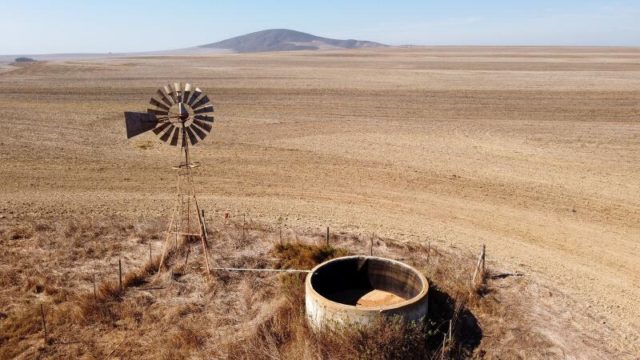Tackling climate change is a national priority for South Africa, says President Cyril Ramaphosa.
TACKLING climate change is a national priority for South Africa, says President Cyril Ramaphosa.
Last week, the president said he and more than 40 other world leaders attended a climate summit, convened by US President Joe Biden, to discuss the global climate change effort in the run-up to the next international climate conference in Glasgow, Scotland in November.
He said there was a common appreciation that the international community needed to dramatically scale up efforts, raise the level of ambition and support developing countries with the means to implement climate actions.
“Even as we continue to fight the Covid-19 pandemic, tackling climate change is a national priority for South Africa. To fully appreciate the devastating impact of climate change on lives and livelihoods in South Africa one need only look at the prolonged drought in parts of the Eastern, Northern and Western Cape,” Ramaphosa said.
The recent drought, from 2018 until last year, drove up food prices, particularly of basic staples such as maize meal, contributing to food insecurity in poor households. It affected the broader economy, as the yield of key agricultural exports declined.
“Drought is widely recognised as one of the extreme weather conditions caused by climate change. Since South Africa is already a water-scarce country, we are particularly vulnerable.
“Understanding this cascading effect is vital. Climate change doesn’t just affect weather patterns. It affects nearly every aspect of our lives, from the food we eat to the water we drink, to where we live. It affects human health, economic activity, human settlement and migration.”
Ramaphosa said the first part of the global response to climate change was mitigation – slowing the rate of global warming by significantly reducing the emission of greenhouse gases.
“The second part is adaptation – taking steps to respond to the effects of global warming. This could range from building infrastructure to protect communities from rising sea levels or regular flooding to planting drought-resistant crops.
“The third part is financing – mobilising resources to support the efforts of developing countries, in particular to adapt to climate change and move towards cleaner forms of energy. This is important because developing countries are most vulnerable to the effects of climate change, despite historically being the lowest emitters of greenhouse gases.”
Ramaphosa said an important part of the response was the Nationally Determined Contribution (NDC) that outlined targets for reducing greenhouse gas emissions. Each country submitted the targets to the UN Framework Convention on Climate Change every five years.
“Last month, we published our updated NDC for public comment ahead of submission to the Glasgow Summit in November.
“Our new NDC proposes a significant reduction in emissions target ranges. By implementing our mitigation strategy, we aim to see our carbon emissions progressively declining from 2025. This is a decade earlier than previously expected.”








